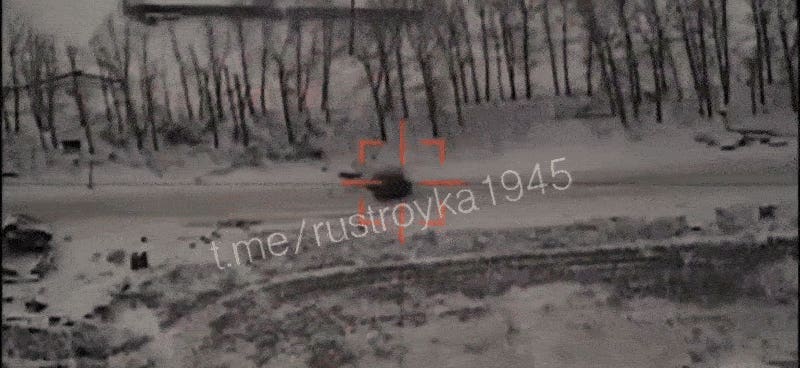North Korean troops are back in action in western Russia’s Kursk Oblast—attacking on foot with fresh tactics and targeting Ukrainian vehicles with their unique Bulsae-4 mobile missile launchers.
“The military contingent of the Korean People’s Army has returned to the operational zone,” the Ukrainian Center for Defense Strategies reported.
Where before, the North Koreans mostly attacked on foot in companies—100 or 200 troops—they’re now launching assaults in platoon groups of 50, according to CDS. The smaller assault groups may help the North Koreans avoid detection by Ukrainian drones—and could mitigate mass casualties in the event the Ukrainians do detect them.
The Ukrainian 47th Mechanized Brigade has been lobbing cluster shells at Russian and North Korean assault groups in Kursk. Each shell scatters as many as 88 grenade-sized submunitions, and can kill and maim infantry across a wide area. Cluster shells have defeated several North Korean attacks in Kursk—including one of the first, in December.
According to Army T.V., the official channel of the Ukrainian armed forces, it’s standard practice for Ukrainian units, including the 47th Mechanized Brigade, to fire a cluster shell at any large concentration of enemy troops—and to follow up the initial strike with an additional high-explosive shell “just to give them no chance.”
Alongside Ukraine’s ever-present first-person-view drones, the cluster munitions are among the main drivers of North Korean casualties. Pyongyang’s 12,000-person 11th Army Corps reportedly lost a third of its troops killed or wounded before temporarily retreating in late January or early February.
It’s unclear whether Pyongyang sent additional infantry to make good the 11th Army Corps’ losses. It is clear that the North Korean regime is supporting a significant arsenal of artillery and missile systems in western Russia and eastern Ukraine.
A Ukrainian drone recently registered the first hit on a North Korean M1989 howitzer near Pokrovsk in eastern Ukraine, and recent releases by Russian channels indicate North Korean Bulsae-4 missile vehicles are active in Kursk.
The Ukrainians first spotted the six-wheeled, eight-missile Bulsae-4 near the front line back in August. They blew up their first Bulsae-4 four months later. The surviving missile vehicles fired back, recently striking a possible Ukrainian fighting position as well as a Ukrainian armored vehicle.
Any successful Bulase-4 strikes would only slightly even the loss rate in Kursk. According to one open-source analyst, the Russians have lost around 550 vehicles in Kursk since the Ukrainians invaded in August. The Ukrainians have lost around 400.
But don’t expect the North Koreans to slow the pace of their attacks in Kursk as they rejoin the fighting—and as the politics of the wider war tilt against Ukraine.
After trying and failing to extort Ukraine for hundreds of billions of dollars worth of rare minerals, President Donald Trump is now leaning on Ukraine to surrender the 20% of its territory that Russia occupies.
Trump even tried to shift blame for the war onto Ukraine. “You should have never started it,” Trump said from his Florida estate, addressing Ukrainian leaders who did not start the war.
Ukraine can fight on regardless of what Trump says or does, especially with increased European support. That resolve is evident along the front line. “I know nothing about [a] ceasefire,” wrote Kriegsforscher, a Ukrainian drone operator in Kursk. “I know nothing about negotiations. I know that the war won’t be over this year. And I know how [to] effectively destroy our enemy.”
But that enemy once again includes potentially large numbers of North Koreans, as well as their big guns and missile launchers.
Read the full article here





